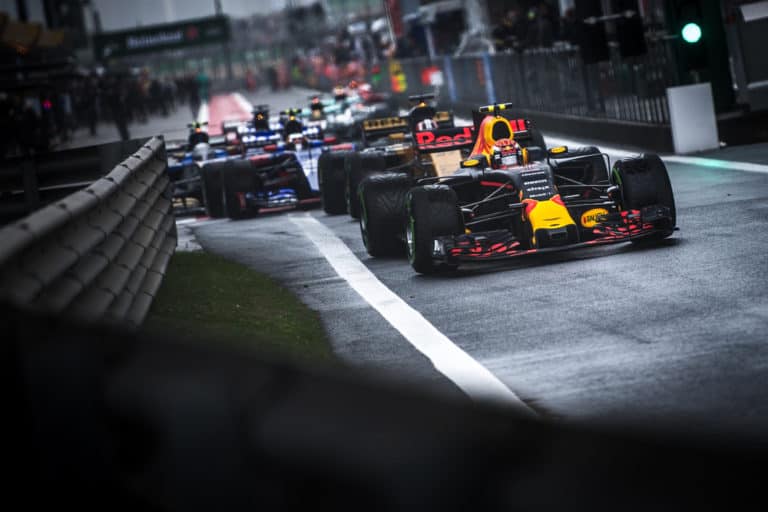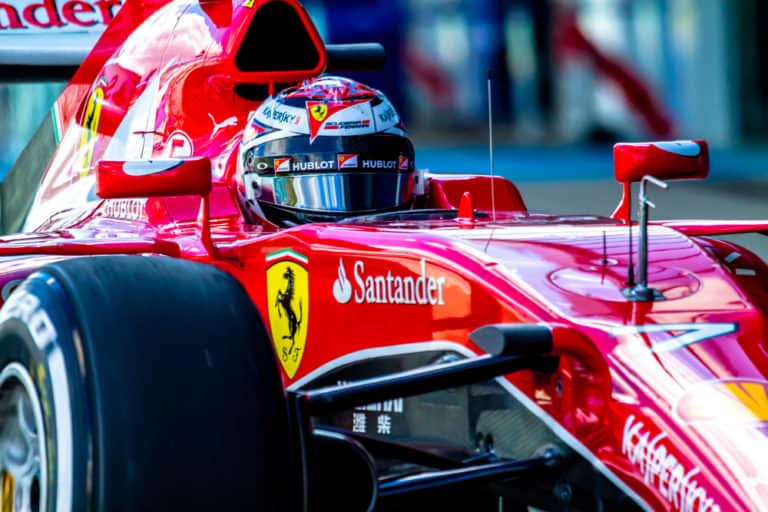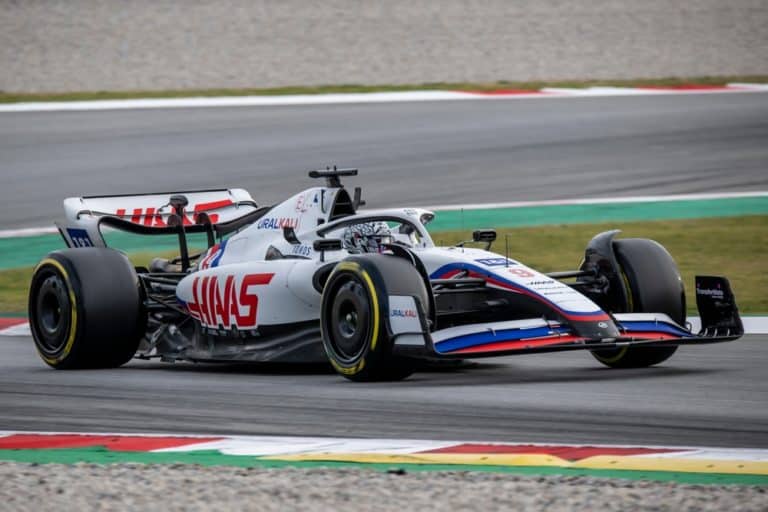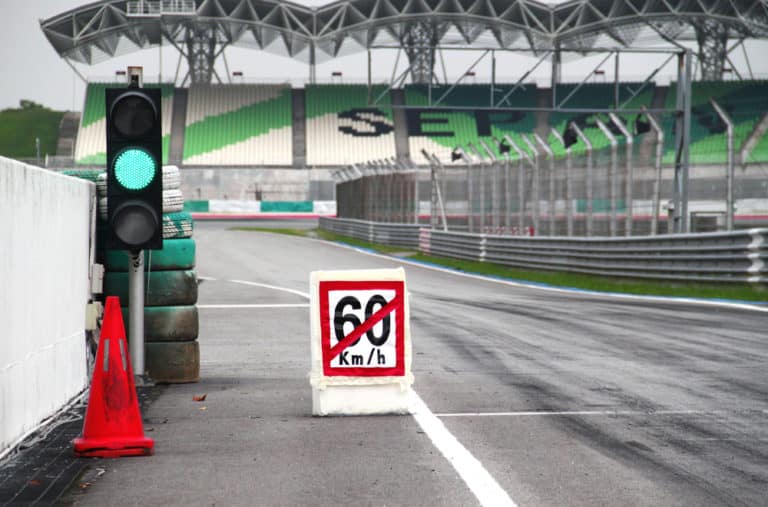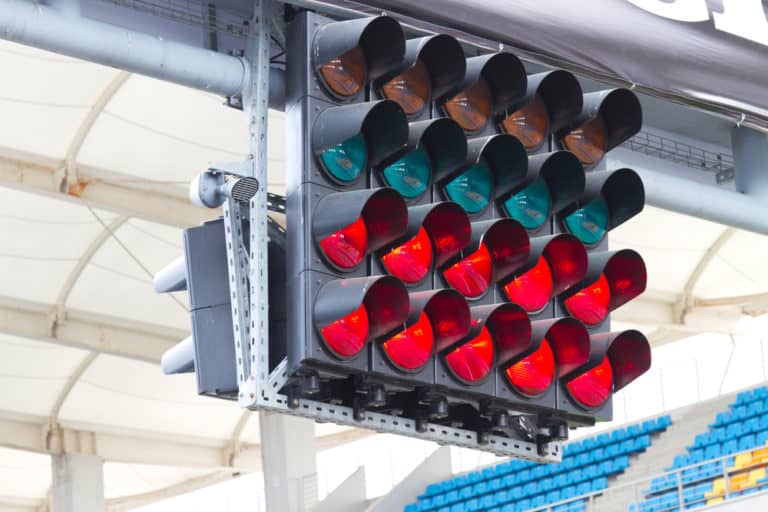Formula 1 cars are some of the fastest and most advanced machines in the world, and they have some elements that look like something out of spaceships. However, they are cars and share many common features with your standard road car. That makes me wonder, do F1 cars have a clutch?
F1 cars have a clutch. However, it doesn’t work the same way as it does in road cars. F1 cars have a semi-automatic seamless shift transmission, and the clutch works electro-hydraulically. The clutch of an F1 car is made so that the drivers change gears at maximum power and not sacrifice speed.
Also, another difference with a standard car (except for automatic ones) is that F1 cars only have two pedals, since instead of having a clutch pedal, they have a clutch paddle on the steering wheel. Let’s go into details to understand everything about F1 clutches.
If you’re looking for some F1 merchandise, check out the awesome stuff at the official F1 store here.
How Does The Clutch Of An F1 Car Work?
The operation of the clutch of a Formula 1 car does not differ much from that of road cars. In a road car, the clutch connects the crankshaft with the gearbox. The crankshaft transforms the reciprocating motion of the pistons into circular motion.
At one end of the crankshaft is the flywheel, whose function is, among other things, to prevent vibrations caused by the alternating movement of the pistons. The engine flywheel, therefore, performs a circular movement like the crankshaft. Both elements transmit said movement to the gearbox.
The clutch discs can rotate together or separate, depending on whether the clutch is depressed or released. When we depress the clutch pedal, we break the connection between the transmission and the engine, making it easier to change from one gear to another.
At that time, the wheels do not receive power. Releasing the clutch pedal reconnects the engine and transmission, propelling the car forward. In F1, it works the same way, although through the clutch paddle.
How Is An F1 Clutch Different From A Normal One?
Although they work in the same way, in F1, the clutch has several peculiarities:
- In F1, the actuation system is of the pull-type, which means that for the clutch to open, it is necessary to pull a spring to separate the discs, while in a road car, it works the other way around: the springs are pushed to separate the clutch. In F1, you stretch these springs, whereas you push them in a standard car.
- The clutch of an F1 is multi-disc, generally made up of 3 or 4 inner discs and 3 or 4 outer ones. A regular clutch has only one plate.
- The clutch of an F1 works electrohydraulically, so the driver does not act directly on the clutch but instead emits a signal. The action is carried out utilizing a hydraulic actuator.
- The clutch is only used during starts, that is, to move the car from a complete stop, and it is not necessary to change gear, so F1 cars have a semi-automatic transmission. The drivers press the paddles on the steering wheel to change gear, and the gear change becomes very fast and efficient.
- A standard clutch system weighs over 50kg in some cases, while the clutch in an F1 car weighs just 1.5kg.
- An F1 clutch is also much smaller (about 150mm) and is made of carbon fiber and titanium, while a standard road car clutch is usually cast iron and high carbon steel. This is due to the high speeds (up to 240 mph) and temperatures (up to 500ºC) that an F1 clutch must withstand.
- A standard clutch can last more than 100,000 km, while the clutch in an F1 car needs to be changed often due to its enormous stress.
Why Don’t F1 Cars Have Clutch Pedals?
F1 cars used to have three pedals, like road cars, until the 1990s. At the 1989 Brazilian GP, Ferrari introduced the concept of a paddle-shifted transmission to F1 on their Ferrari Type 640 F1. This innovation soon caught on, and by 1992 most teams ditched the shifter in favor of paddles, and by 1996 all teams had made the switch.
Using paddle shifters instead of 3 pedals has numerous advantages. Having only two pedals during the 1990s, having only 2 pedals allowed cars to have a thinner, more aerodynamic nose. Also, shifting with the paddles makes it impossible to miss a gear and potentially damage the engine.
Also, drivers can use left-foot braking, which is very effective on the racetrack. The paddle shifters also allow for more precise driving, as the driver has both hands on the wheel at all times.
How Does An F1 Car Start?
As we said before, the clutch in an F1 car is only used for starts. To change gears, the drivers only use the shift paddles.
F1 wheels have two clutch paddles, which have the same function, but the paddle that is pressed the most takes precedence. Before a start, the driver presses one of the paddles fully while the other one is pressed halfway. When the lights go out, the driver releases paddle #1, so the pressure on the clutch goes from 100% to 50%, and then progressively releases paddle #2 to go forward, gain traction and get throttle control.
The driver has to play with the clutch and throttle to get a perfect start. This has been the case since 2008, as launch control was banned for that season. In this way, race starts depend more on the driver’s reflexes and skill and are more complex.
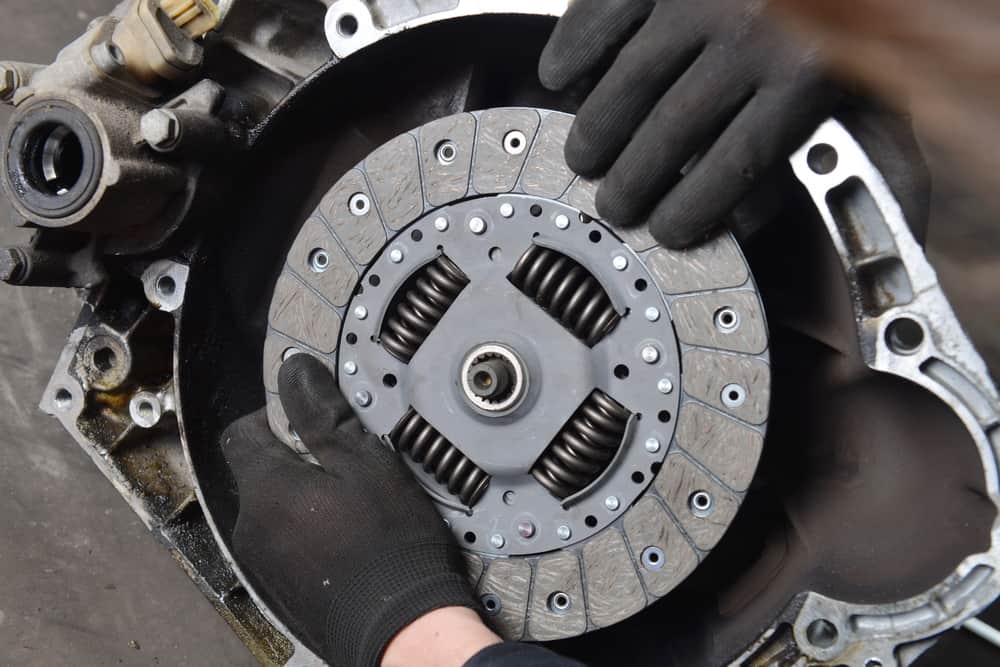
Conclusion
F1 cars have a gearbox, so they have a clutch. However, as F1 cars are the most advanced and fastest cars in the world, the clutch is very different from that of a normal car. Although the operation of the clutch itself is similar to that of a normal car, there are many elements that differentiate them.
The clutch in an F1 car is made for maximum efficiency and speed. F1 cars have a semi-automatic seamless shift transmission, and the clutch works electro-hydraulically. It is a very important element, especially in race starts.

